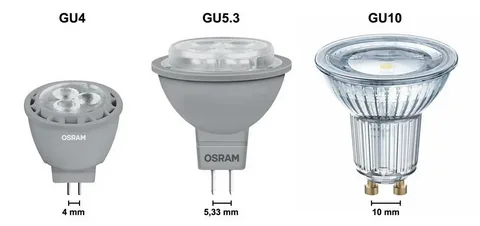Whether you’re planning a home lighting upgrade or replacing spotlights in a commercial space, understanding the difference between PAR16 vs MR16 bulbs can help you make a smarter, more efficient decision.
These two bulb types may look similar at first glance—but they serve different purposes, perform differently, and aren’t always interchangeable. If you’ve ever been confused while shopping for LED spotlights, you’re not alone.
Here’s a clear breakdown of how they compare and which one might be right for your needs.
What Does PAR16 and MR16 Mean?
Before we dive into the comparison, let’s clarify the terms:
- MR16 stands for Multifaceted Reflector, 16 eighths of an inch in diameter—that’s 2 inches across. It uses an internal reflector to direct light.
- PAR16 stands for Parabolic Aluminized Reflector, 16 eighths of an inch—also 2 inches in diameter. It uses a parabolic shape and often has a lens for controlling beam spread.
While both are 2″ in diameter, the internal design and light behavior are quite different.
Beam Control and Light Spread
MR16 bulbs typically produce a narrower, more focused beam, making them ideal for spotlighting art, retail displays, or architectural features.
PAR16 bulbs, on the other hand, are designed for stronger, broader beams, which are excellent for general lighting or directional floodlighting in kitchens, hallways, or track systems.
Base Types and Voltage Differences
One of the most important distinctions lies in how they connect:
- MR16 bulbs usually have bi-pin bases (commonly GU5.3) and run on low voltage (12V), requiring a compatible transformer.
- PAR16 bulbs often have E26 screw bases and run on line voltage (120V), which makes them plug-and-play in standard household sockets.
So if your fixture doesn’t have a transformer, PAR16 is the safer choice.
Appearance and Housing
Visually, the differences become clear:
- MR16 bulbs are often shorter in length and sit deeper in recessed fixtures.
- PAR16 bulbs tend to be slightly longer and enclosed with a lens or cover to shape and protect the beam.
If your fixture has depth or cover limitations, this difference may matter.
Application Use Cases
Choose MR16 if you need:
- Focused spotlighting
- Low-voltage systems
- Directional lighting for artwork, shelving, or retail
Choose PAR16 if you need:
- General-purpose floodlighting
- Direct screw-in replacement bulbs
- Lighting for kitchens, hallways, or ceilings without transformers
Energy Efficiency and Heat Output
Both bulbs are available in energy-saving LED versions. However:
- PAR16 bulbs tend to handle heat better due to their larger housing and aluminum reflectors.
- MR16 LED versions are more efficient than their halogen predecessors but may need better ventilation in enclosed fixtures.
Both are excellent energy savers compared to halogens.
Cost and Availability
PAR16 bulbs are generally easier to find and more versatile in residential settings.
MR16 bulbs are slightly more specialized and used in architectural or design-focused lighting setups.
When switching from halogen to LED, always double-check size, voltage, and compatibility.
Need a Complete Comparison?
Still unsure which spotlight bulb is right for your space? Don’t miss this detailed guide on PAR16 vs MR16, where we explore how each type stacks up in terms of size, use case, and performance in real-world settings.
Final Thoughts
The PAR16 vs MR16 debate really comes down to application, compatibility, and personal preference. While both bulbs are compact and energy-efficient, they’re designed for slightly different tasks.
If you’re replacing a standard screw-in spotlight, PAR16 is likely your go-to. If you’re working with a low-voltage or specialty fixture, MR16 might be a better fit.
Choose based on your lighting goals—and let performance, not just size, guide the way.

